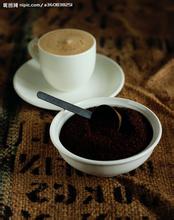An introduction to the characteristics of coffee flavor and taste of Santa Barara Manor in Honduras with light fruit flavor.
Honduras is Republican, democratic and representative. The National Assembly is the supreme legislature. The president is the head of state and government and is in charge of the executive power of the country. The Cabinet is the executive branch of the government, directly under the leadership of the President. In November 2009, presidential elections were held in Honduras. Kuomintang presidential candidate Lowo was elected president with 55.9% of the vote and took office on January 27, 2010. [5]
Constitution
The current Constitution of Honduras entered into force on January 20, 1982. The Constitution stipulates that Honduras is Republican, democratic and representative. The National Assembly is the supreme legislature. The president is the head of state and government and the commander-in-chief of the armed forces, and is in charge of the executive power of the country. The Cabinet is the executive branch of the government, directly under the leadership of the President. [2]
Ignoring opposition from the Supreme Court, the military, Congress and the ruling party, President Zelaya insisted on holding a referendum on June 28, 2009, asking voters whether they agreed to set up a Constituent Assembly to amend the constitution so that the president could be re-elected during the presidential election in November 2009. at the same time, a formal referendum was held, as the military had previously refused to deliver the referendum votes and launched a military coup an hour before the referendum. The military gathered hundreds of soldiers to the presidential residence to arrest President Zelaya, took him to an air base on the outskirts of the capital Tegucigalpa, and then sent a special plane to exile Zelaya to Costa Rica. [2]
Parliament
The parliament has a unicameral system and is the highest legislature in the country, composed of 128 members. Members are directly elected by voters for a term of four years. The current parliament was formed in January 2010, with 62 seats from the ruling Liberal Party, 55 seats from the Kuomintang and 11 seats from other parties. The current speaker, Juan Orlando Hern á ndez of the Kuomintang, was elected in January 2010 for a four-year term. [2]
The government
The current government was established on January 27, 2010. the main cabinet members are: Maria Antonieta Gillian, Vice President and Minister of the Presidential Office (female, Mar í an Antonieta Guire é n), Minister of the Interior and Justice (Á frico Madrid), Foreign Minister Mireya Aguero de Corales (female) Mireya Ag ü ero de Corrales), Adonis Lavaire, Minister of Industry and Trade, Wilfredo Rodriguez, Minister of Finance, Rigoberto Cuellar Cruz, Minister of Natural Resources and Environment, Fel í cito Avila Ordonez, Minister of Labour, Arturo Bundania, Minister of Health Arturo Benda ñ a, Minister of Education Malone O'Neill Escoto (Marlon Oniel Escoto), Minister of Public works, Transport and Housing Miguel Pastor, Minister of Culture, Arts and Sports Tulio Mariano Mariano Gonz á lez, Minister of Agriculture and Animal Husbandry Jacobo Jacobo Regalado, Minister of Defense Marlon Pascua, Minister of Public Safety Arturo Corrales lvarez, Minister of Tourism Nellie Jerez (female Nelly Jerez Caballero), Minister of Technical Cooperation Julio Laudales (Julio Raudales)
The granules of coffee beans in Honduras are large in shape, uniform in size and glossy in color. In order to facilitate harvesting, farmers will prune the coffee trees to no more than 150 centimeters, because if they grow too high, they have to set up ladders to pick, which is not only time-consuming, but also may damage the trees by bending branches. As the ripening period of each fruit of coffee beans is different, in order to maintain the good quality of coffee beans, it is necessary to pick them manually, and then select the ripe fruits. For coffee fruits of the same branch, it often takes several weeks to pick them all.
High-quality coffee in Honduras uses water washing to deal with coffee beans, usually after soaking, when the defective fruit will surface, it can be discarded first. Then put the good fruit into the fruit peeling machine and peel off the peel with the rotating force of the machine. Peeled fruits are screened by machines to select fruits of high quality. Usually the bigger the fruit, the better the maturity. Coffee in Honduras is dried in the sun, so it always has a faint fruity flavor in its taste.
Flavor and taste characteristics: good flavor, rich and mellow, suitable for mixed drinking. Honduran coffee bean Honduras, the most obvious feeling is relatively soft and thick, occasionally a little sweet; low acidity, in Central American coffee producing areas, Honduran coffee is famous for black berry flavor and caramel sweet, medium mellow thickness, and even has black pepper and cut tobacco flavor in some batches of coffee.
Honduras produces two kinds of coffee of very good quality, which are highly respected by coffee lovers. One is "Highland Coffee", which grows at an altitude of 1000 to 1500 meters, and the other is "selected Highland Coffee", which represents the highest level of Honduras, which grows at an altitude of 1500 to 2000 meters. Most Honduran coffee is exported to the United States and Germany.

Important Notice :
前街咖啡 FrontStreet Coffee has moved to new addredd:
FrontStreet Coffee Address: 315,Donghua East Road,GuangZhou
Tel:020 38364473
- Prev

Inka Hayangan Manor Coffee with strong flavor Taste Features of producing area Variety introduction
Indonesia is located in southeast Asia, across the equator, bordering Papua New Guinea, East Timor and Malaysia, and facing Thailand, Singapore, Philippines and Australia across the sea. Indonesia straddles the equator (12S-7N), and more than 70% of its territory is located in the southern hemisphere, making it the largest country in the southern hemisphere of Asia (East Timor is also a southern hemisphere country). Longitude crossing 9
- Next

Fragrant and authentic Salvadoran Coffee Manor flavor and taste characteristics of Renas Manor
Farah Bandomatti National Liberation Front (Frente Farabundo Mart parala Liberacin Nacional), the ruling party. In October 1980, the Farah Bendomatti people's Liberation Army, the National Resistance Forces, the people's Revolutionary Army, the Central American Labor Revolutionary Party and the Communist Party of El Salvador jointly formed an armed front against the government. In January 1992, the Front signed with the Government
Related
- Does Rose Summer choose Blue, Green or Red? Detailed explanation of Rose Summer Coffee plots and Classification in Panamanian Jade Manor
- What is the difference between the origin, producing area, processing plant, cooperative and manor of coffee beans?
- How fine does the espresso powder fit? how to grind the espresso?
- Sca coffee roasting degree color card coffee roasting degree 8 roasting color values what do you mean?
- The practice of lattes: how to make lattes at home
- Introduction to Indonesian Fine Coffee beans-- Java Coffee producing area of Indonesian Arabica Coffee
- How much will the flavor of light and medium roasted rose summer be expressed? What baking level is rose summer suitable for?
- Introduction to the characteristics of washing, sun-drying or wet-planing coffee commonly used in Mantenin, Indonesia
- Price characteristics of Arabica Coffee Bean Starbucks introduction to Manning Coffee Bean Taste producing area Variety Manor
- What is the authentic Yega flavor? What are the flavor characteristics of the really excellent Yejasuffi coffee beans?

